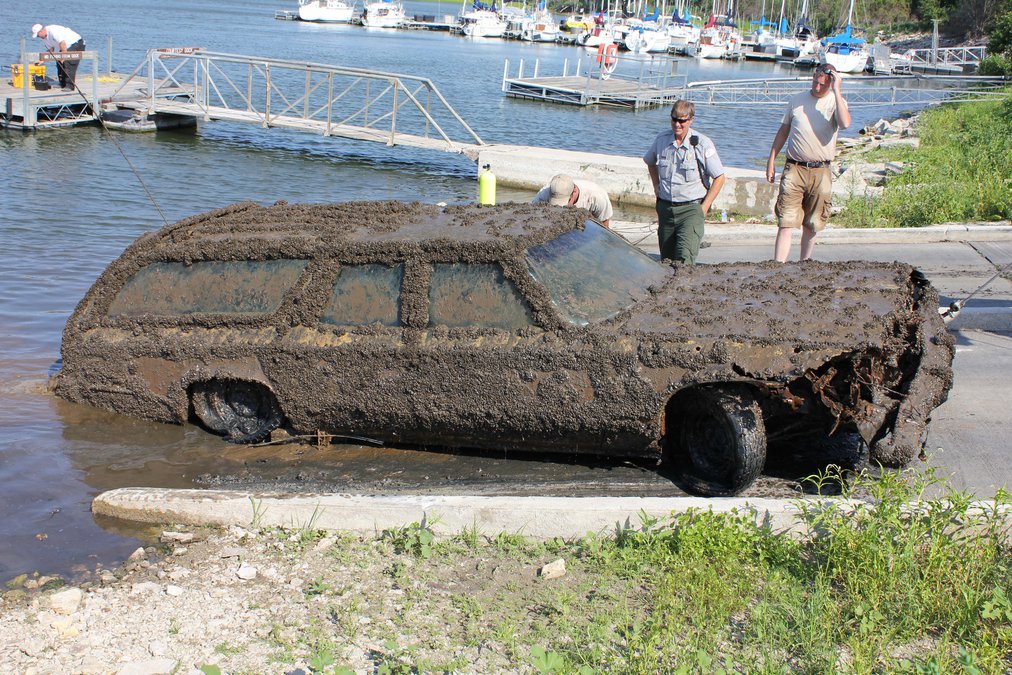

EMPORIA — The Kansas Department of Wildlife, Parks and Tourism reports good news about preventing the spread of aquatic nuisance species. According to Chris Steffen, KDWPT aquatic nuisance species coordinator, no zebra mussel larvae were detected in a 2018 sampling of 110 uninfested lakes in Kansas. Lakes are sampled annually and include city, county, state and federal lakes.
Aquatic nuisance species (ANS) are animals and plants not native to Kansas that can threaten lake and river ecology, harm native or desirable species and interfere with our economy. They often hitchhike in or on boats, flotation devices, and other gear used in the water. Adult zebra mussels can attach to boats or other equipment and their free-floating, microscopic larvae (called veligers) may be present in water from an infested lake or stream. Densities as high as 1,000 veligers per gallon have been recorded in some Kansas waters.
“These results are encouraging, and I hope this success means that lake users in Kansas are more aware of how to prevent the movement of zebra mussels by cleaning, draining, and drying their boats and equipment before recreating at another lake,” said Steffen. “I am particularly excited because remembering to clean, drain and dry prevent the spread of not only zebra mussels, but also other harmful aquatic species that threaten our waters now and in the future. We urge everyone who uses our lakes and rivers to keep up the good work.”
Zebra mussels are known to occur in 30 lakes in Kansas. They are just one of the non-native aquatic species that threaten our waters and native wildlife. After using any body of water, people must remember to follow regulations and precautions that will prevent their spread:
• Clean, drain and dry boats and equipment between uses
• Use wild-caught bait only in the lake or pool where it was caught
• Do not move live fish from waters infested with zebra mussels or other aquatic nuisance species
• Drain livewells and bilges and remove drain plugs from all vessels prior to transport from any Kansas water on a public highway. For more information about aquatic nuisance species in Kansas, report a possible ANS, or see a list of ANS-designated waters, visit ProtectKSWaters.org.
About Zebra Mussels
Zebra mussels are dime-sized mollusks with striped, sharp-edged, two-part shells. They can produce huge populations in a short time and do not require a host fish to reproduce. A large female zebra mussel can produce 1 million eggs, and then fertilized eggs develop into microscopic veligers that are invisible to the naked eye. Veligers drift in the water for at least two weeks before they settle out as young mussels which quickly grow to adult size and reproduce within a few months.
After settling, zebra mussels develop byssal threads that attach their shells to submerged hard surfaces such as rocks, piers, and flooded timber. They also attach to pipes, water intake structures, boat hulls, propellers, and submerged parts of outboard motors. As populations increase, they can clog intake pipes and prevent water treatment and electrical generating plants from drawing water. In 2012, two Kansas communities, Council Grove and Osage City, experienced temporary water shortages from zebra mussel infestations before water intake structures could be cleaned up. Removing large numbers of zebra mussels to ensure adequate water flow can be labor-intensive and costly.
Zebra mussels are native to the Black and Caspian seas of western Asia and eastern Europe and were spread around the world in the ballast water of cargo ships. They were discovered in Lake St. Clair and the Detroit River in 1988 and quickly spread throughout the Great Lakes and other rivers including the Mississippi, Illinois, Ohio, Tennessee, Arkansas and Hudson. They were first discovered in Kansas in 2003 at El Dorado Reservoir. Despite public education efforts to alert boaters about the dangers of zebra mussels and how to prevent spreading them, the species continues to show up in new lakes every year. Moving water in boats and bait buckets has been identified as a likely vector.





